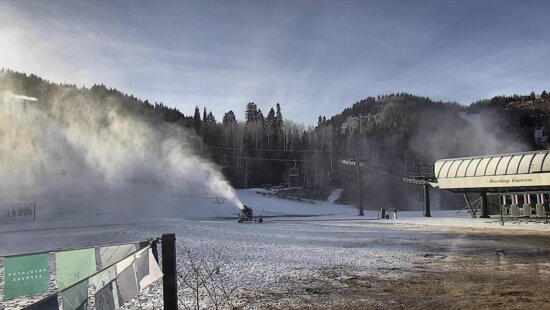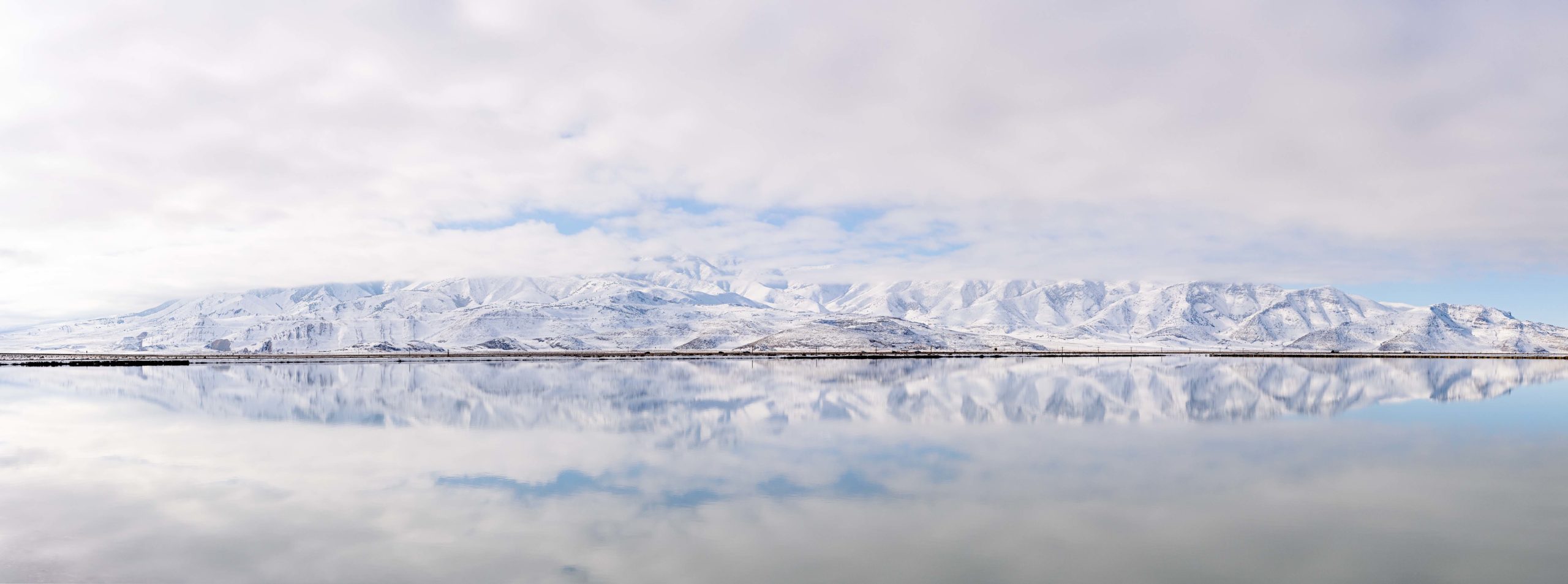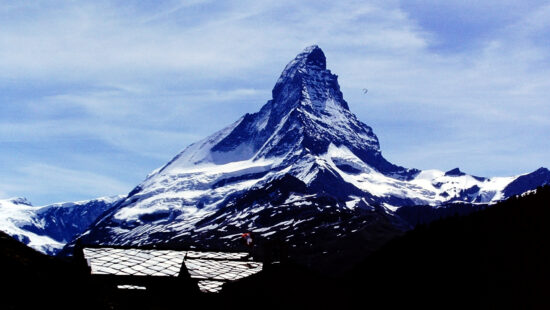Environment
Billions at stake for resort towns as US ski season shrinks
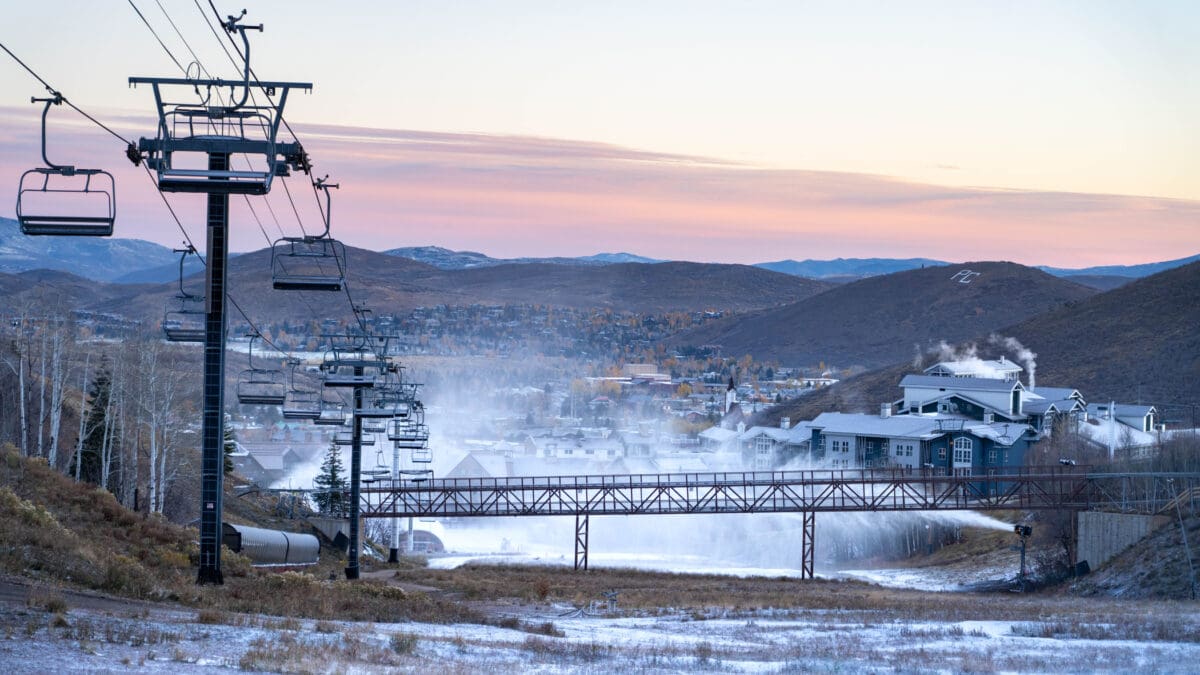
Park City Mountain began its snowmaking operations for the 2023/24 season on Thursday, October 26. Photo: Park City Mountain // Jack Loosmann
Ski seasons could be up to two months shorter by the 2050s, with potential losses soaring to between $657 million and $1.352 billion annually.
A recent study by researchers Daniel Scott and Robert Steiger claims that climate change is reshaping the skiing landscape of the U.S. in concerning ways. After looking at 226 ski resorts, researchers found out that ski seasons are getting shorter—by about a week, on average. This isn’t only bad news for skiers; it’s also costing the industry a whopping $252 million every year.
The reason? A drop in ski season days means fewer people hitting the slopes, and it’s costing more to make artificial snow. Simply put, the study argues that climate change is already causing big problems for skiing in the U.S., both for the fun of the sport and the money it brings in.
But that’s just the tip of the iceberg. Looking forward, the situation appears even more dire. Depending on how much global emissions are reduced, ski seasons could be up to two months shorter by the 2050s, with potential losses soaring to between $657 million and $1.352 billion annually. And, according to the study, “Snow cover duration and snow mass at lower elevations are projected to continue to decrease under all emission scenarios.” The stats shed light on climate change as not a looming threat but a current challenge that’s already taking a toll on the ski industry’s bottom line.
Since the 1970s, signs that the world’s climate was changing started to become clear. According to reports, there’s been a notable increase in the global average temperature by about 0.18°C every decade since 1981—a significant change from the slow cooling trend observed over the previous 7,000 years, where temperatures fell by 0.01°C every century. The Intergovernmental Panel on Climate Change (IPCC), in its comprehensive Fifth Assessment Report, firmly stated that these changes in our climate are directly caused by human activities.
The increase in temperature since the mid-20th century, especially pronounced in mountain regions, is leading to less snow and shorter winters—conditions that are not conducive to skiing. This has forced the ski industry to acknowledge climate change as an immediate concern, prompting a shift in operations, including significant investments in snowmaking technology as a way to adapt. However, the study suggests that even these efforts might not be enough to combat the effects of a warming climate. The study states, “Only in the 2010s and early 2020s have average ski seasons stabilized or declined slightly (except for the Rocky Mountains), indicating that the adaptive capacity of snowmaking is no longer able to completely offset ongoing climate changes and that the era of peak ski seasons has likely passed in most US markets.”
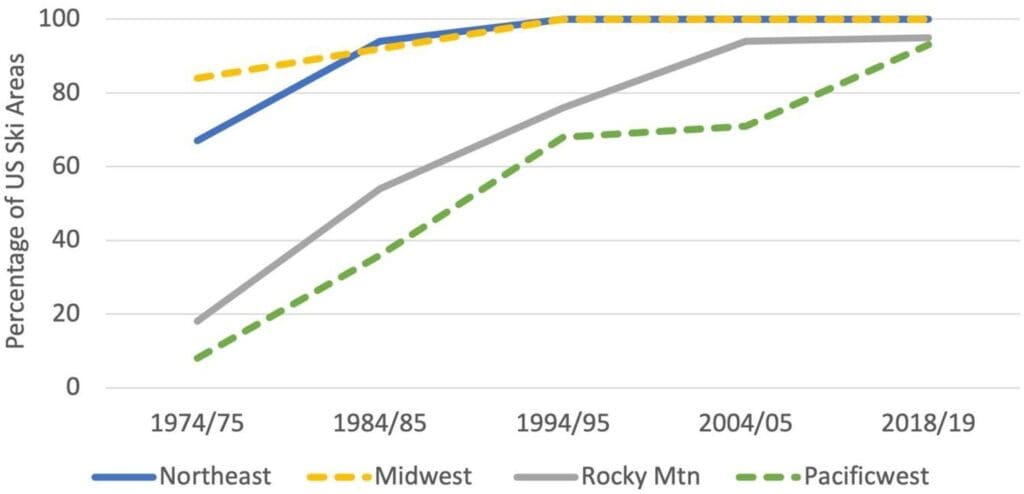
As the industry grapples with these challenges, the research also highlights the broader economic impact on communities that depend on ski tourism, from potential job losses to reduced tourist spending.
Recently, there’s been a shift in focus among stakeholders in the ski industry. Instead of just looking ahead, ski destinations, investors, and the media are now keen on understanding how climate change has already affected the ski industry. This shift in focus could be driven by recent legal developments, such as the lawsuit initiated by Colorado communities, which are central to the US ski tourism sector. Boulder County, San Miguel County, and the City of Boulder have sued ExxonMobil and Suncor, accusing them of contributing to climate change and the subsequent harm it has caused their areas. The communities demanded compensation for the harm already done and for future adaptation costs. In 2023, the US Supreme Court decided not to step in, allowing the case to continue in state court.
The recent case could set a precedent, encouraging other ski areas or regions to seek legal remedies for the financial losses caused by climate change. Proving the extent of these damages, both past and future, poses a complex challenge but is a crucial step for any legal action against those deemed responsible for contributing to climate change. This study’s insights come at a time when communities affected by climate change, like those in Colorado, could start using the data provided by this research in future litigation, offering a clearer picture of the financial damages incurred due to climate change.
The reported financial losses due to climate change are based on two main factors: decreased revenue from fewer skier visits and higher costs for snow production. However, these figures may underrepresent the true economic impact. Skiers’ spending extends beyond the slopes to include a variety of goods and services at their destinations, contributing significantly to the local economy. This wider spending stimulates more business, increases personal income, creates jobs, and boosts government revenue. Factoring in these broader economic effects, especially with an economic multiplier for ski tourism spending, would reveal much greater damages to communities.

Highlights from this new study show the need for a change in emissions, and quickly, but according to Scott’s and Steiger’s findings,
“The damage already done by anthropogenic climate change to the US ski industry is evident. We are probably past the era of peak ski seasons for even with advanced snowmaking, average ski seasons in all regional markets are projected to get shorter in the decades ahead under all emission futures. How much shorter is dependent on the ability of all countries and sectors to deliver on their emission reduction commitments to achieve the goals of the Paris Climate Agreement.”

















